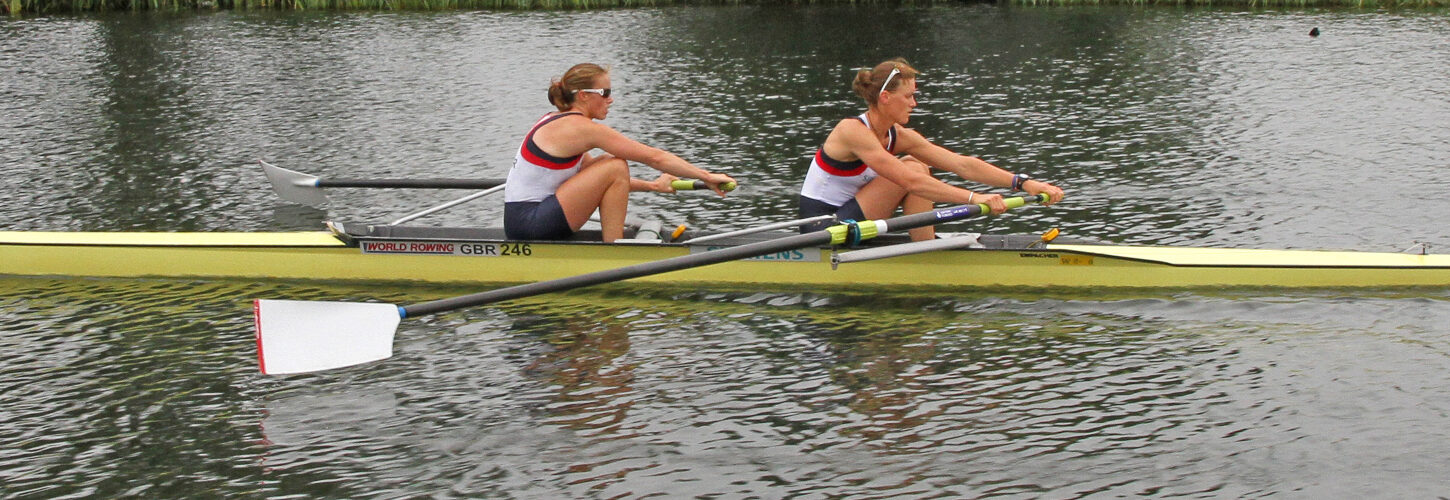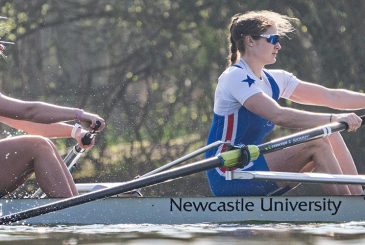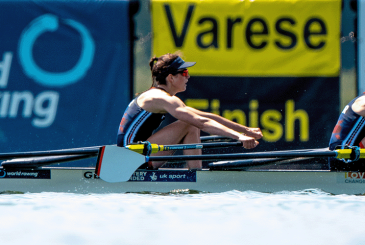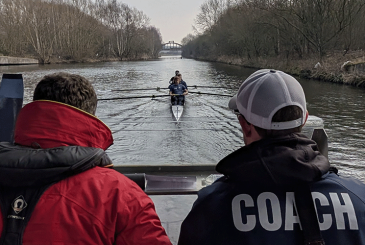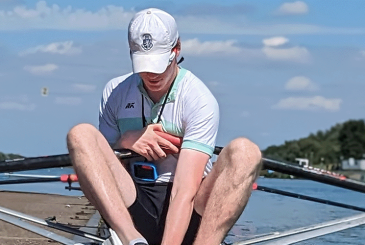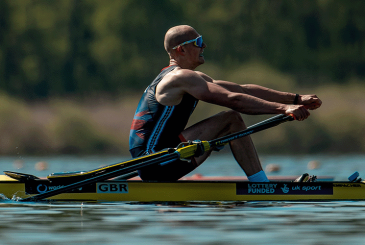Rosie Mayglothling looks at technique and moving a boat efficiently in an article originally written for our Masters series, but which applies to rowers of all ages
Good technique is only good if it moves the boat efficiently as well as effectively. As well as considering the generation of the power required in the drive, there is the contrasting relaxation on the recovery and finally the pathway of the blade. Understanding how each of these makes the boat move will help you to work on your technique
What is the secret to moving a boat efficiently?
British Rowing sweep and sculling technique is described as a long, leg-driven stroke. This technique is based on evidence as to how to move the boat most effectively. It sounds very simple, and when executed well, looks simple. Sequencing is key to getting the body and blade into the right position throughout the stroke.
As most of you will know, the aim is to move the boat past the blade. Often the phrase distance per stroke is connected to good technique and effective rowing or sculling. If you think about these two aspects, then it really does affect how you generate the power. The blade is put in the water, loaded up and then the handle moves the boat past the blade. Take the blade out of the water, return to the catch position, and repeat. Sitting in an unstable boat, with external conditions, and for most, coordinating with crewmates adds to the complexity of rowing.
Sequencing
Starting at the catch, the body is in a strong position with the rock-over coming from the hips, not the lumbar spine. This is significant for two reasons: it puts the rowers in the best physical position by giving a good connection through the feet to the handle, so that power can be generated effectively in the horizontal direction.
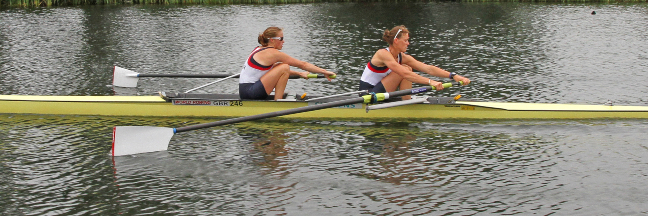
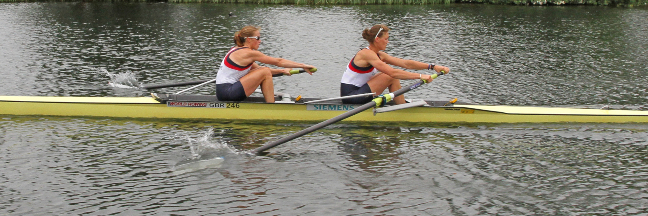
The significance of this series of pictures with double Olympic gold medallists Helen Glover and Heather Stanning is to show how the legs drive the boat. Pictures 1-2 above show that the arms move upwards to bury the blade, while the body stays in the same position. In picture 2, the gap between thigh and body is created by the arms rising to lift the blade into the water, and the legs starting to go down.
“We all like freebies, so moving in a relaxed manner up the slide, with the boat moving under you can add boat speed”
In picture 3 below, the body is still in a similar position to the catch. It has fractionally started to open in picture 4, although this is due more to the rotation of the outside shoulder which keeps the weight on the blade by following the path of the handle. The rowers’ shoulders are still in front of their hips and they are hanging their weight on the blade.
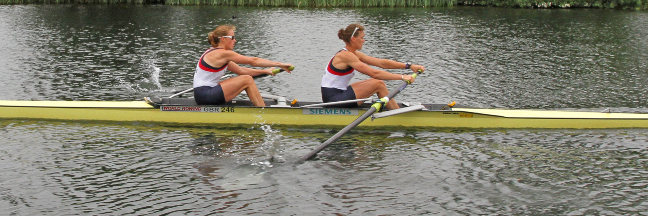

The body and arms, together with the continued pressure through the legs on the footplate, complete the stroke. The handle goes down and around an imaginary cog next to the body, and the hands and body move away from the finish. In pictures 5 and 6, the hands and body are moving but the seat is still in the finish position.
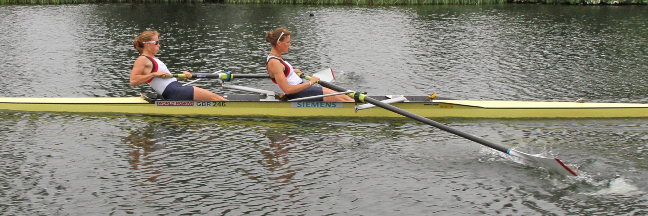
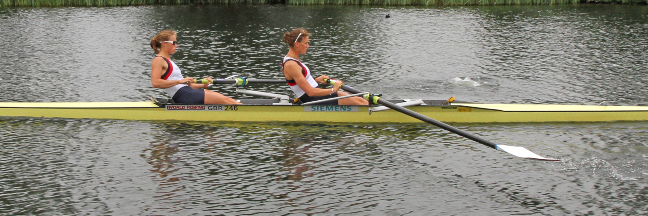
Pictures 7-10 show the order of the recovery. This is a smooth sequence of hands, adding the body and then the slide. Look particularly at how the body is fully over in picture 10 and is ready to take the catch. The final action on the recovery is to slide to the catch position. You can see that the blade is beginning to square so it will be able to take the catch at the most forward point of the recovery.
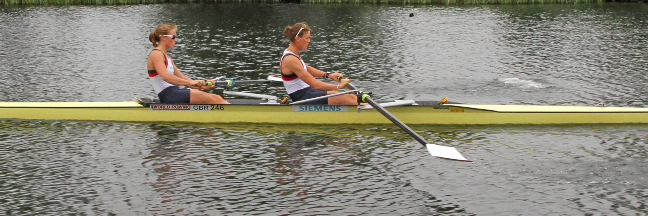

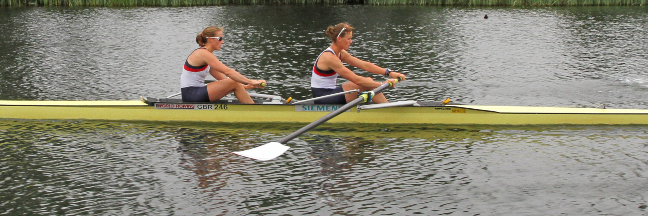
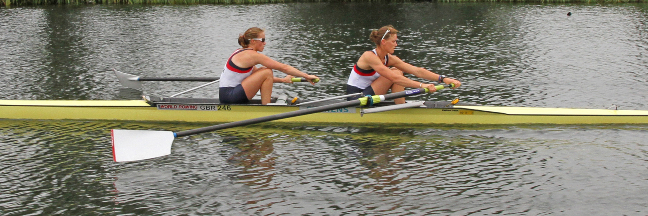
The recovery and how you manage this can add to boat speed. Listen to Michelle Darvill’s talk here at the World Rowing Virtual Coach Conference 2022 which starts at 58:43. Michelle coached the Canadian women’s eight to gold at the 2020 Tokyo Olympics and speaks about the recovery as getting something for nothing. We all like freebies, so moving in a relaxed manner up the slide, with the boat moving under you, can add boat speed. As the rowers transfer their weight forward, they accelerate the boat under them. The feeling should be instead of the seat moving to front stops and the boat speed moves the foot stretcher to the rower, or the boat moves under the rower.
Timing and sequencing as a crew are key here, or the effect is diminished. The most difficult part of this is how to change direction on the foot stretcher to minimise the deceleration of the boat, which is why it is so important to get the blade in the water and load it up at the catch point.
Finally, consider how you manage the blade. The outside hand has two functions: it has greater leverage and so the wrist should remain flat throughout the drive to maximise the power transfer, but this leverage also extends to controlling the height of the blade. A small lift or push down will enable the blade to get into and out of the water with minimum effort. Throughout all phases of the stroke, the outside hand remains flat. This means that the grip is light when feathering and squaring, allowing the handle to rotate in the outside hand.
Take it further
Check out these books and resources below:
- Rowing and Sculling by (2015) Rosie Mayglothling with Tristan Mayglothling. Available here from Crowood Press.
- Robin Williams has written several articles on rowing technique on British Rowing Plus.
- The Biomechanics of Rowing (2020) revised 2nd edition by Dr Valery Kleshnev. Available here from Crowood Press.
- Advanced Rowing: International Perspectives on High Performance Rowing,eEdited by Charles Simpson and Jim Flood (2017), published by Bloomsbury. Available here.
Photos of Helen Glover and Heather Stanning as taken by Don Somner


